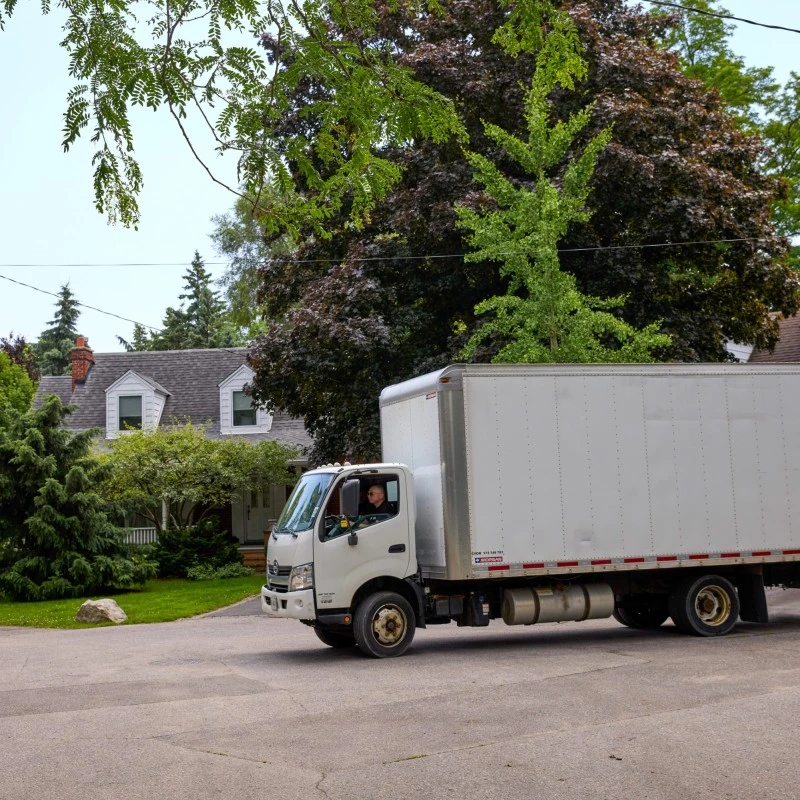10 Downsides to Consider Before Moving to Canada


Canada is a sought-after country for many people around the world looking to relocate.
With our public healthcare system, outstanding educational institutions, and a high quality of living for most residents, Canada is an appealing place to work, study, start a business or raise a family.
Despite its substantial list of positive attributes, Canada isn’t perfect. Just like with any major life decision, it's good to weigh the positives and the negatives of all options. Canadian life comes with a few challenges, but residents have found a way to live with or work around limitations. In this article we outline some of the downsides to living in Canada.
Canadian Winters Are Cold and Dark
For up to 6 months of the year, more than 90% of Canada is cold and snowy. Unless you live on the coast of British Columbia surrounded by temperate rainforest, expect continental, subarctic and arctic climates.
Most of the Canadian population lives in areas with continental climates. This means that winters usually have significant snowfall. Often the temperature drops to below -15℃ at night and in some areas, can get as low as -45℃.
Most regions in Canada require vehicle owners to swap tires on their cars to adjust to winter driving. This can be expensive, costing up to $160 if your winter tires aren’t mounted on rims.
Canada’s high latitude means that winters are dark, and the significant lack of daylight can negatively influence mental health. Even in the southernmost parts of Canada, where most of the population resides, days are short near the December 21st solstice. The sun will rise at around 8 am and set at around 4 pm, making it already pitch black when most people end their work day. The farther north you go, the longer the dark nights are. Many Canadians experience SAD (Seasonal Affective Disorder) and suffer low moods throughout the winter.
On the flip side, if you are in the far north during summertime, there are only a few hours each night of darkness, making it hard to maintain a healthy circadian rhythm and get enough sleep.
Even if you do live in a (slightly warmer) temperate climate, expect most of the winter to be overcast, rainy and dreary. On average, the city of Vancouver has about 160 to 180 days of rainfall each year. While this can be off-putting, the bonus is that you can hike, bike and walk somewhat comfortably and safely year-round.
All this being said, if you love winter sports such as skiing, snowboarding, snowshoeing or hockey, Canada is the place for you!
Canada Has a High Cost of Living

A high quality of life, healthcare, and education systems comes with a cost. Canada is one of the most expensive countries in the world to live in, particularly in major cities such as Toronto, Vancouver, Victoria and Montreal, where rental costs are exorbitant.
Groceries cost quite a bit, especially because produce is imported from warmer countries in the winter. A massive amount of energy is used to heat homes in the winter, making utilities (or firewood) costly. Transportation is expensive due to Canada’s low population and low demand for travel (see below).
Despite the aforementioned expenses, many residents find the benefits of Canadian living worth the high cost.
Domestic Travel is Limited and Due to Canada’s Low Population
Compared to other more populated countries, there isn’t quite the same demand for travel options within Canada. There are vast distances separating cities and towns, and large regions of wilderness and sparsely populated areas. Because of this, transportation infrastructure is less developed in many parts of the country, resulting in fewer travel options, higher costs, and longer travel times.
Remote and rural areas have fewer (or no) public transportation options, and residents often have to travel far to the nearest airport. This can result in difficulty accessing services and visiting loved ones.
Canada’s Healthcare Challenges
These days, finding a family doctor in Canada is no joke. There is a shortage of healthcare professionals all around, resulting in long wait times for non-emergency services.
Many Canadians have to wait a long time (sometimes years) for surgeries, specialist consultations, and diagnostic tests. People who live rurally and remotely have extra challenges in accessing healthcare due to a lack of adequate facilities and providers.
Luckily the Canadian government is undergoing strategies to alleviate current healthcare challenges:
-
Family doctors are advocating for a shift toward team-based care, where medical decisions involve collaboration with other professionals such as nurse practitioners, occupational therapists, and pharmacists.
-
Physicians are also calling for improved physician mobility and enhanced virtual care options, enabling patients to access medical support when and where they need it.
-
In 2023, Canada introduced a new law permitting pharmacists to prescribe medication for certain minor health conditions. This legislation aims to alleviate pressure on doctors' offices and emergency rooms by allowing pharmacists to handle non-serious health concerns.
The Majority of Canadians Live Along the Southern Border
Because most of Canada’s population is concentrated in the south, there is significant pressure on infrastructure and services in densely populated areas. Remote and northern areas experience limited access to healthcare, education, and economic opportunities.
Emergency planning and disaster response are an issue because most of the resources are allocated to heavily populated areas, especially in the south. This leaves more remote regions underserved, which is problematic as these are often the regions that experience higher numbers of natural disasters such as flooding and wildfires.
Much of Canada is Uninhabitable
Due to harsh, unforgiving environmental conditions, a huge part of Canada is uninhabitable. Approximately 90% of the country’s land area experiences extreme climates including arctic and subarctic regions. So much of the terrain is too rugged to be populated. The harsh winters, permafrost and limited resources of these areas make them unappealing to the majority of Canadians.
Resilient Indigenous communities have thrived in these areas for millennia. The Inuit traditionally live in the Arctic regions of Canada and have a lifestyle adapted to the extreme cold. They hunt and fish for the majority of their food, with a diet that includes seals, whales, and fish. Their traditional shelters include igloos and turf/Earth huts, which are homes that are partially built into the ground. The Inuit people value art, storytelling and community, which keeps them strong, connected and inspired in the harsh northern environment.
Canada is Heavily Influenced By Our Southern Neighbours

Let’s face it, the United States is a force to be reckoned with and holds power over Canada in various ways.
Canada has an economic dependency on the U.S., and fluctuations in U.S. policies and trade practices impact industries in Canada. This limits Canada’s ability to pursue independent policies. By aligning with U.S. foreign policy, Canada may become involved in decisions or conflicts that don’t align with its own interests.
Relying too heavily on the U.S. compromises Canada’s sovereignty. Residents may be impacted by international conflicts and foreign policy decisions involving the U.S., in turn affecting global security and Canada's international relations.
These factors can contribute to economic uncertainty such as job security and higher costs for Canadians, as well as potential consequences due to the political instability of our southern neighbours.
Taxes Are High in Canada
Canada has a lot to offer in the areas of social programs and public services, including healthcare, education and social welfare. These amazing benefits come at a high cost.
The publicly-funded healthcare system, universal social services, and robust infrastructure require huge financial support, acquired through high tax rates for Canadians.
No Fresh Produce in the Winter
Canada imports a lot of its food. During the cooler months (October-April), almost all produce is imported to Canada from places like California, Mexico, South America, South Africa and New Zealand. This means the crops are harvested weeks before they make it to your kitchen. Imported food is less nutritious and flavorful.
Many proactive gardeners in Canada utilise greenhouses, hothouses and light-assisted farming techniques to produce local crops during the cooler months.
Wildfires and Floods
Global temperatures continue to shift, and along with that comes changes in weather. Weather changes can bring natural disasters such as wildfires and floods. These devastating events cause property damage, displacement and health risks.
Wildfires in Canada are increasingly common every summer, as a result of poorly managed forests, clearcutting, and monoculture. These highly disruptive events can destroy homes in a second, fill the air with thick smoke, and force evacuation of entire communities. Natural habitats are destroyed and the loss of life in the natural world is devastatingly high.
Floods are caused by deforestation and populating wetlands. The roots of trees and bushes in the forest help to keep water flowing slowly and seeping into the earth. Without the forest to contain large amounts of water, destructive flooding takes place.
B.C.’s First Nations communities always advise not to build on wetlands. When development happens on wetlands while the water table is low, there is a high risk of flooding during the rainy months. Abbotsford B.C. is built on a wetland and suffered massive flooding in November 2021.
Floods cause property damage and major infrastructure challenges, resulting in the displacement of communities. Recovering from a flood is a long-term feat and can change a community forever.
Both fires and flooding put a huge strain on emergency services in Canada. Insurance rates get impacted, and daily life and local economies experience disruption.
What do our customers say?


![The Cost of Living in Canada [2025] The Cost of Living in Canada [2025]](https://cdn.topmove.ca/image/blog/fd5e6f8de7a01a874376620f785ffdba.jpeg)
![The Cost of Living in Canada [2025] The Cost of Living in Canada [2025]](https://cdn.topmove.ca/image/blog/a1d96e743c7ff302c8b61de9e16a7310.jpeg)






















